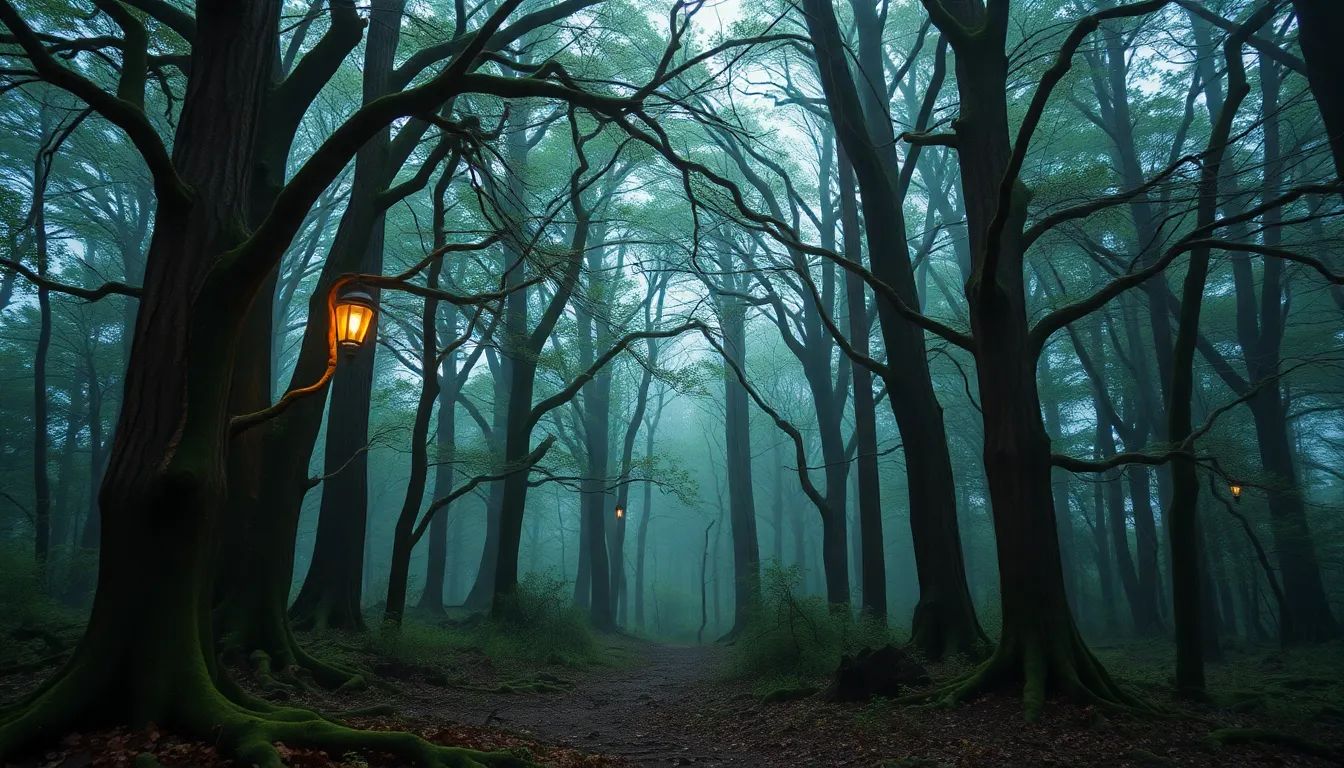The Enchanted Forest: A Tangle of Myths and Magic
1. Introduction to the Enchanted Forest
An enchanted forest is often depicted as a mystical woodland filled with magic, wonder, and a plethora of secrets. These forests are not just places of natural beauty; they are steeped in folklore and mythology, serving as settings for countless tales of adventure, transformation, and self-discovery.
Throughout history, enchanted forests have held a significant place in the cultural narratives of various societies. They embody the dual nature of beauty and danger, often acting as a threshold between the known and the unknown. This article aims to explore the rich tapestry of myths and magic associated with enchanted forests, shedding light on their historical origins, symbolism, and contemporary representations.
2. Historical Origins of the Enchanted Forest
The concept of enchanted forests can be traced back to ancient civilizations, where they were often seen as sacred spaces inhabited by deities or spirits. For example, the Celts revered their forests as places of worship, believing that supernatural beings resided within the trees.
Geography and climate played a crucial role in shaping forest mythology. In regions with dense, dark woods, tales of danger and malevolent spirits were more prevalent, while in lighter, more open forests, stories often revolved around harmony and peace. Key historical texts, such as the works of Homer and Ovid, frequently reference enchanted forests, illustrating their importance in the literary canon.
3. Symbolism and Themes in Enchanted Forest Myths
The enchanted forest serves as a powerful symbol of the unconscious mind, representing the hidden depths of human emotions and desires. Within these woods, characters often confront their innermost fears and desires, leading to profound transformations.
- Transformation: Many tales feature characters who undergo significant changes after their time in the forest.
- Self-discovery: The forest journey often mirrors a quest for identity and purpose.
- Dichotomy: Enchanted forests can be both a sanctuary and a source of danger, embodying the dual nature of existence.
4. Renowned Enchanted Forests Around the World
Many forests around the globe are steeped in enchantment and myth. Here are a few renowned examples:
- The Black Forest (Germany): Known for its legends of witches and spirits, this dense woodland has long captured the imagination of storytellers.
- The Forest of Arden (England): Immortalized by Shakespeare in “As You Like It,” Arden represents pastoral ideals and the beauty of nature.
- Aokigahara (Japan): Infamous for its association with death and the supernatural, this forest is rich in folklore and mystery.
5. Magical Creatures and Beings of the Enchanted Forest
Enchanted forests are often inhabited by a variety of magical creatures, each bringing its own lore and significance to the narrative.
- Fairies: Often depicted as tiny, winged beings, fairies are known for their mischievous nature and magical abilities.
- Elves: These beings are typically portrayed as wise and beautiful, often serving as guardians of the forest.
- Sprites: Smaller than fairies, sprites are usually associated with natural elements, such as water and air.
In modern interpretations, these creatures have evolved, appearing in films, literature, and art, often reflecting contemporary values and aesthetics.
6. Enchanted Forests in Folklore and Fairy Tales
Many classic fairy tales are set in enchanted forests, where characters embark on journeys filled with challenges and moral lessons. Notable examples include:
- Hansel and Gretel: A tale of survival and cunning, highlighting themes of resourcefulness and sibling loyalty.
- Little Red Riding Hood: A story that warns of the dangers lurking in the woods and the importance of heeding parental advice.
These narratives often reflect societal values and fears, using the enchanted forest as a backdrop for moral and ethical lessons.
7. The Role of Nature in Enchanted Forest Myths
Nature plays a pivotal role in enchanted forest myths, with flora and fauna serving as symbols and characters in their own right. Trees, plants, and animals often embody various attributes, contributing to the narrative’s depth and complexity.
- Trees: Frequently symbolize life, wisdom, and growth.
- Plants: Certain plants are associated with magic and healing, while others may carry warnings.
- Animals: Creatures of the forest often represent different aspects of humanity, from cunning foxes to wise owls.
In modern adaptations, environmental concerns are increasingly represented, highlighting the importance of preserving these magical ecosystems.
8. The Psychological Impact of Enchanted Forests
Enchanted forests can have profound psychological effects on individuals. The therapeutic benefits of spending time in nature are well-documented, with many finding solace in the beauty and tranquility of forest environments.
The allure of mystery and the unknown inherent in enchanted forests can also provide a refuge from the stresses of modern life. These magical spaces allow individuals to reconnect with their inner selves, fostering a sense of peace and clarity.
9. Contemporary Representations of Enchanted Forests
In contemporary media, enchanted forests continue to inspire filmmakers, authors, and artists. The portrayal of these mystical woods has evolved, reflecting modern sensibilities and cultural contexts.
- Films: Movies such as “Into the Woods” and “The Princess and the Frog” incorporate enchanted forests as key elements of their narratives.
- Literature: Modern fantasy novels, like “The Night Circus” and “The Hobbit,” often feature enchanted forests filled with wonder and peril.
- Art: Artists explore the theme of enchanted forests, creating visual representations that evoke mystery and beauty.
These contemporary works play a significant role in revitalizing the enchantment of forests, introducing new generations to their magic.
10. Conclusion: The Enduring Legacy of the Enchanted Forest
The enchanted forest remains a powerful symbol in folklore and mythology, representing the intersection of magic, nature, and the human experience. Its rich history and symbolism continue to inspire and captivate audiences across cultures and generations.
As we navigate a rapidly changing world, the allure of the enchanted forest serves as a reminder of the beauty and mystery that still exists in our natural surroundings. Whether through ancient tales or modern adaptations, the enchanted forest will undoubtedly continue to enchant and inspire for years to come.



